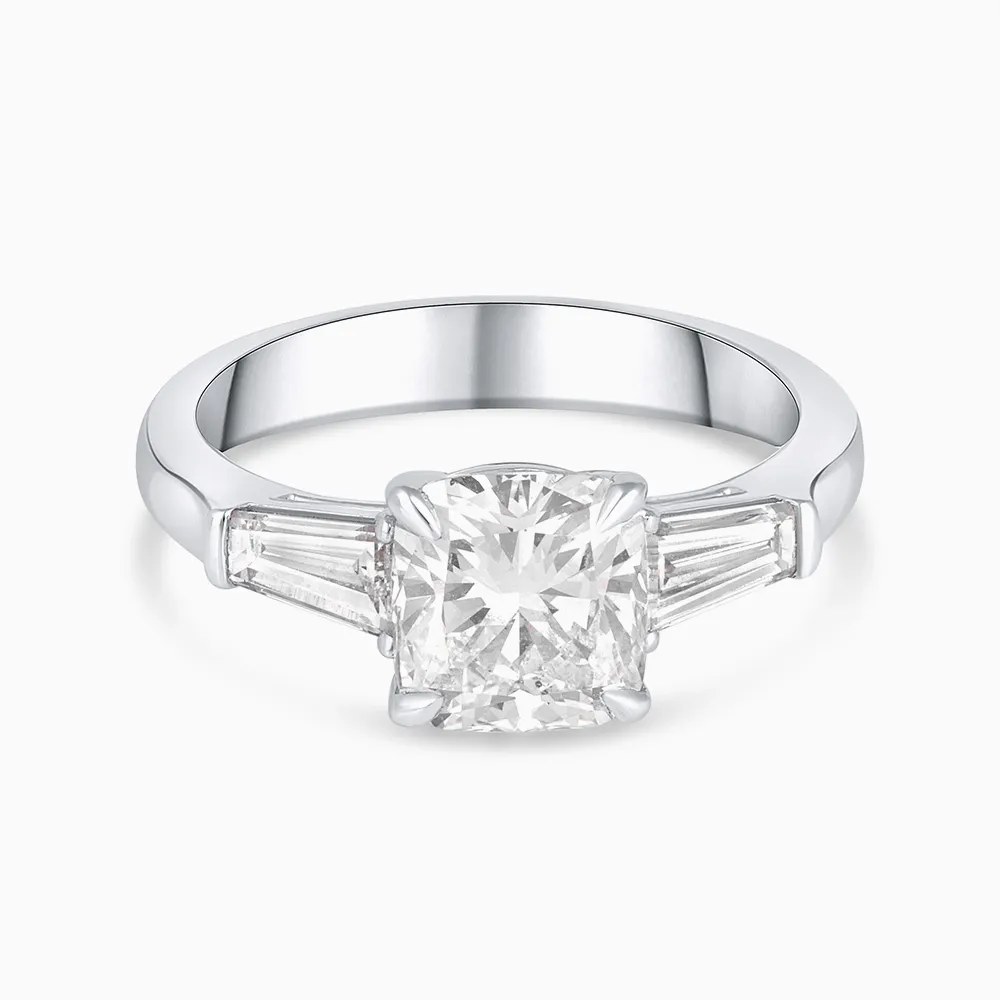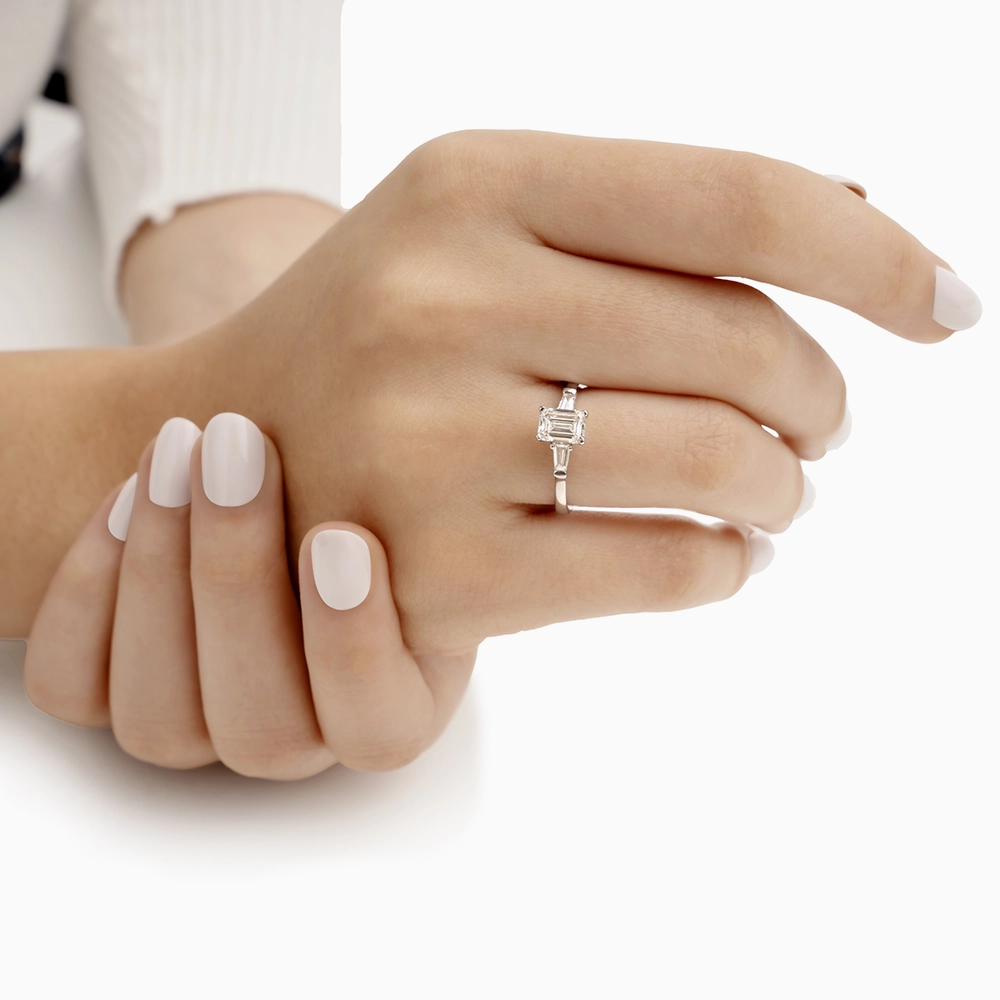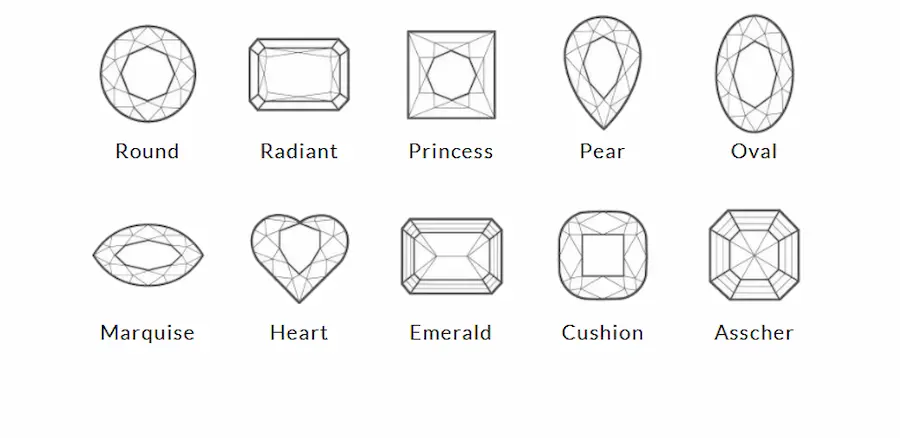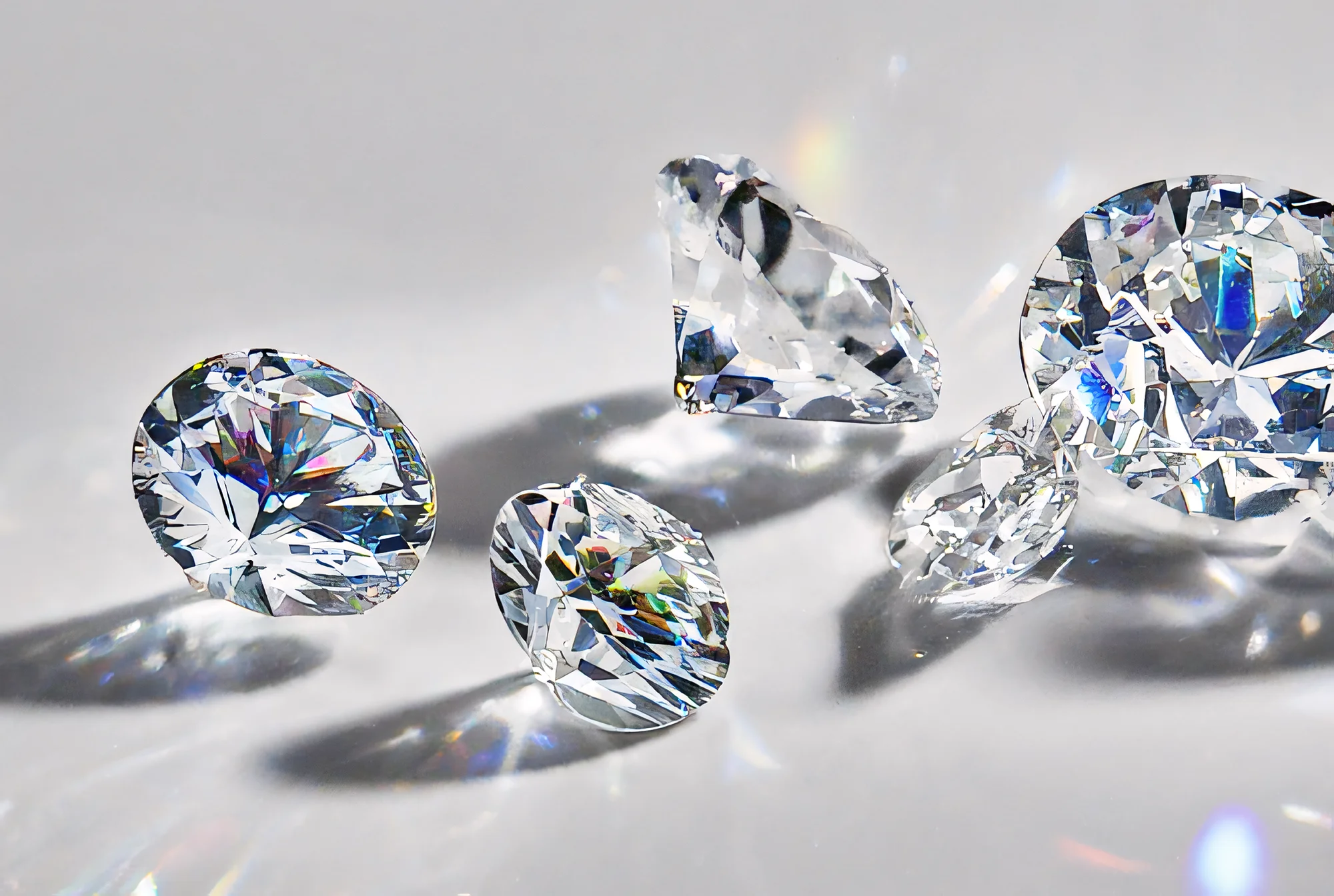Choosing the right diamond shape and cut transcends mere aesthetics; it embodies a profound personal style and preference statement. With a variety of diamond cuts available, each stone boasts distinct characteristics that significantly shape its visual appeal. From the timeless brilliance of a round diamond to the modern elegance of an emerald cut, every shape evokes unique emotions, enabling individuals to reflect their personality through their choice of gem.
Notably, diamond cuts are critical in determining a diamond’s brilliance, sparkle, and overall beauty. This decision reflects not only an individual’s aesthetic taste but also their unique essence.
What Is a Diamond Cut?
A diamond cut refers to the process of transforming a rough diamond into a faceted gem. It encompasses more than just the diamond’s external shape, such as round, square, or pear. Instead, it involves how the small facets are arranged and proportioned across the diamond’s surface.
To explore more about how diamond craftsmanship brings brilliance to life, visit our Kooheji Diamonds page for an in-depth look at expert diamond artistry.
Why Is Cut Important?
Diamond cuts are vital for several reasons, summarized as follows:
- Beauty and Brilliance: Diamonds are prized for their exceptional ability to reflect light, enhancing their desirability in jewelry with unmatched sparkle.
- Durability and Hardness: As the hardest known natural material, diamonds resist scratches and damage, ensuring the longevity of jewelry crafted from them.
- Symbolism: Associated with eternal love and commitment, diamonds are a traditional choice for engagement and wedding rings, symbolizing luxury and status.
- Value: Regarded as precious gemstones, diamond jewelry often retains or increases in value over time.
- Cutting and Drilling Tools: Diamond cuts are utilized in tool heads, drill bits, and saw blades to cut hard materials like metals, rocks, ceramics, and glass.
- Abrasives and Polishing Materials: Diamond powder polishes metals and other gemstones and is used in manufacturing grinding wheels.
- Electronics Industry: With high thermal conductivity and electrical insulation, diamonds help dissipate heat in electronic components, preventing overheating.
- Automotive Industry: Diamond cuts contribute to crafting engine parts and components requiring precision and durability.
- Medical Devices: They are employed in precision surgical instruments and medical laser app

How Is a Diamond Cut Graded?
Diamond cuts are evaluated based on four primary criteria, known as the 4Cs:
- Carat: This measures the diamond’s weight, with one carat equaling 200 milligrams. Higher carat weights generally increase value.
- Color: This assesses how colorless a diamond is, graded from D (completely colorless and most valuable) to Z (light yellow or brown). Whiter, colorless diamonds are more prized.
- Clarity: This gauges the absence of internal inclusions and external blemishes, examined under 10x magnification and graded from FL (flawless) to I3 (included). Clearer diamonds hold higher value.
- Cut: Unlike shape, the cut evaluates how a diamond’s facets interact with light. It’s assessed based on brightness, scintillation (sparkle), fire (color dispersion), symmetry, and facet finish. Excellent diamond cuts are the most valuable, reflecting light perfectly.

Different Types of Diamond Cuts
Numerous diamond cuts exist, each offering a unique appearance and characteristics. They can be grouped into three main categories:
- Round Brilliant: The most popular and classic of diamond cuts, featuring precisely designed facets to maximize brilliance and sparkle.
- Princess Cut: A modern square or rectangular cut with sharp corners, delivering an eye-catching sparkle.
- Cushion Cut: A square or rectangular shape with rounded corners, blending vintage and contemporary styles with a soft sparkle.
- Oval Cut: An elegant oval shape offering brilliance akin to the round cut, appearing larger for the same carat weight.
- Marquise Cut: A rectangular shape with tapered ends, elongating and slimming the finger’s appearance.
- Pear Cut: A teardrop shape merging the marquise’s elegance with the round cut’s brilliance, offering a distinctive appeal.
- Heart Cut: A romantic, symmetrical heart shape requiring expert craftsmanship to perfect.
- Radiant Cut: Combining an emerald shape with enhanced brilliance, featuring beveled corners and multiple facets.
- Emerald Cut: Showcasing parallel rectangular facets for a “hall of mirrors” effect, emphasizing purity and color.
- Asscher Cut: Similar to the emerald but square, with stepped facets creating depth and unique brilliance.
- Baguette Cut: Long, narrow rectangular facets, often used as side stones to complement main gems.
- Carre Cut: A square cut with stepped facets, highlighting purity and requiring high-quality stones.

How Does Diamond Cut Impact Price?
The quality of diamond cuts significantly affects their price. Here’s why:
- A well-executed diamond cut maximizes brilliance (white light reflection), fire (colored light dispersion), and scintillation (sparkle) through internal and external light reflection.
- Higher cut grades (Excellent/Ideal, Very Good) enhance light performance, making these diamonds more desirable and costly.
- Poorly cut diamonds lack brilliance, reducing their value.
- Achieving a high-quality cut, especially in larger carats, is rare, demanding skilled craftsmanship and more time.
- During cutting, significant portions of the rough diamond are lost to achieve optimal proportions and symmetry, increasing the cost per carat for superior diamond cuts.
How Do Diamond Cuts Impact Brilliance and Sparkle?
The diamond cut is the most critical factor influencing a gem’s beauty. A diamond with excellent color and clarity but a poor cut appears dull and lifeless. Conversely, a diamond with an exceptional diamond cut, even with lower color or clarity, showcases stunning brilliance and sparkle. Skilled cutters meticulously shape the stone to balance brilliance, fire, and scintillation, unlocking the gem’s full potential.
Conclusion
Choosing the right diamond cut goes beyond superficial beauty; it’s a profound expression of identity and style. With a diverse array of diamond cuts, each offers unique traits that influence visual appeal and emotional resonance. Whether you prefer the timeless round brilliant or the sophisticated emerald cut, understanding diamond cuts ensures your gem reflects both your aesthetic and essence.
To delve deeper into the artistry behind diamond brilliance and explore exquisite craftsmanship, visit our Kooheji Diamonds page for more insights and inspiration.





